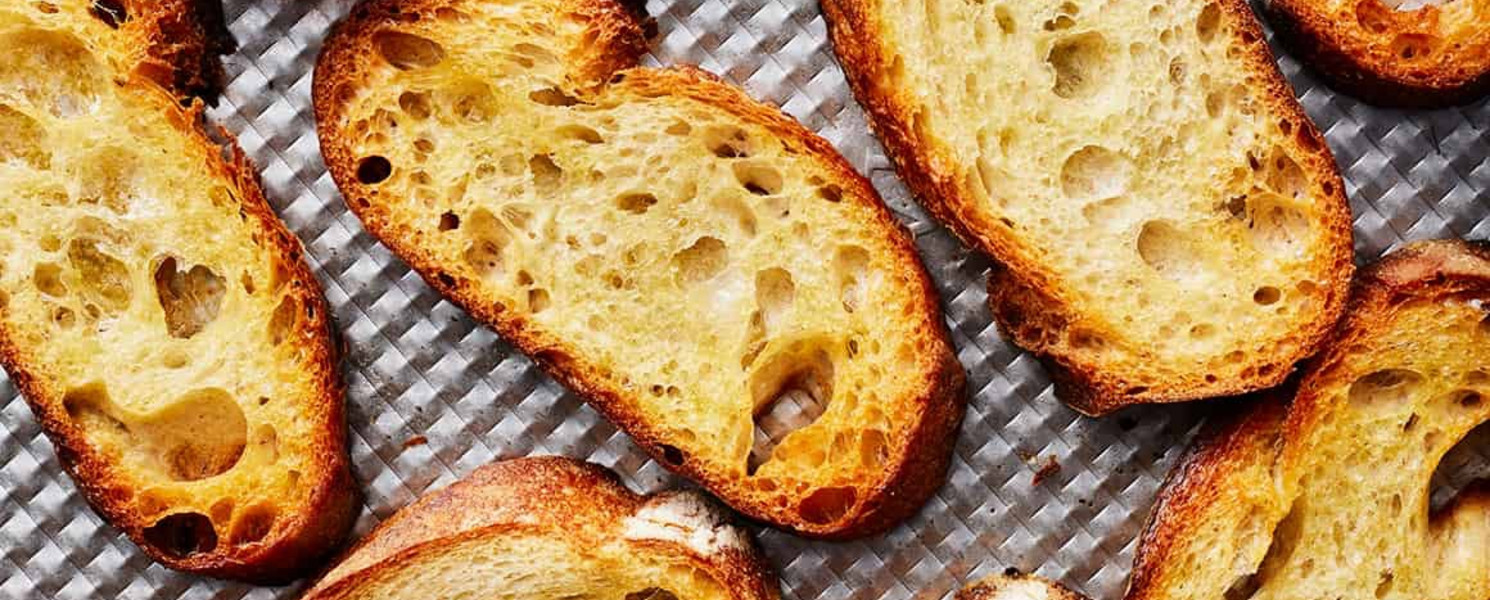
Spicy Black Bean and Sweet Potato Chickpea Crostini
Ingredients:
1 cup of black beans, soaked overnight and cooked
2 medium sweet potatoes, peeled and diced
1 small red onion, finely chopped
2 cloves garlic, minced
1 tablespoon olive oil
1 teaspoon smoked paprika
1 teaspoon ground cumin
1 teaspoon chili powder
1 teaspoon salt
1 tablespoon lime juice
Fresh cilantro leaves for garnish
1 cup of chickpea flour (gram flour)
1 cup of water
1 avocado, sliced (optional)
Instructions:
Prepare the Sweet Potato and Black Bean mixture.
Preheat your oven to 200°C.
Toss the diced sweet potatoes with 1 tablespoon of olive oil, smoked paprika, cumin, chili powder, and salt. Spread them on a baking sheet and roast for 20-25 minutes or until tender.
In a pan, heat a little oil and sauté the red onion and garlic until fragrant. Add the cooked black beans and lime juice, and cook for another 5 minutes, mashing slightly to combine. Add the roasted sweet potatoes to the mixture and mix well.
Prepare the Chickpea Flour Crostini.
In a bowl, mix the chickpea flour with water to form a batter.
Heat a non-stick pan over medium heat and lightly grease it with oil.
Pour small rounds of the batter onto the pan, cooking for 2-3 minutes on each side until golden and crispy. These will serve as the base for your canapés.
Assemble the canapés.
Top each chickpea flour crostini with a spoonful of the black bean and sweet potato mixture.
Garnish with fresh cilantro leaves and possibly a slice of avocado.
We work with United Nations Sustainable Development Goals (SDGs) as the guide for our recipes.
Goal 1: No Poverty
Using locally sourced black beans and sweet potatoes can create or sustain jobs in rural areas because:
Supporting local farmers ensures a steady demand for their produce, leading to increased income and stability in rural communities.
Purchasing local produce reduces transportation costs and benefits the local economy, encouraging more sustainable farming practices.
Goal 2: Zero Hunger
This recipe contributes to food security and improved nutrition by:
Utilizing nutrient-rich ingredients like sweet potatoes and black beans, which are high in vitamins, minerals, and protein, essential for a balanced diet.
Encouraging the use of local and seasonal produce ensures that fresher, more nutritious food is available to the community.
Nutritional Benefits:
Black Beans are rich in protein, fiber, iron, and folate. They support muscle repair, digestion, and overall health.
Sweet potatoes are high in vitamins A and C, potassium, and fiber. They boost immunity, skin health, and digestion.
Chickpea flour provides a good source of protein, fiber, and various vitamins and minerals, supporting overall health and wellness.
Avocados are packed with healthy fats, vitamins E and K, and fiber. They support heart health and improve satiety. However the avocado requires enormous quantities of water and is hard to store so this is one product that we only use if we have it leftover.
Goal 8: Decent Work and Economic Growth
Promoting the use of indigenous crops supports decent work and economic growth because:
Increasing demand for locally grown crops can lead to the expansion of agricultural enterprises, providing more jobs and improving livelihoods in rural areas.
Encouraging innovative recipes like this one can inspire small businesses and food entrepreneurs to develop new products, further stimulating economic growth.
Goal 12: Responsible Consumption and Production
This recipe emphasizes responsible consumption by:
Focusing on plant-based ingredients, which have a lower environmental impact compared to animal-based products.
Using every part of the produce reduces food waste, promoting more sustainable food consumption habits.
Replacing wheat flour with chickpea flour adds value to legumes, supports crop diversification, and utilizes more sustainable crops.
Goal 13: Climate Action
This recipe supports climate action by:
Reducing reliance on imported and processed ingredients, lowering the carbon footprint associated with food transportation and processing.
Encouraging the use of legumes, which are known for their low environmental impact and ability to fix nitrogen in the soil, improving soil health.
By incorporating local Kenyan produce and innovative uses of vegetables and legumes into this canapé recipe, we not only create a delicious and nutritious dish but also contribute to several of the United Nations’ Sustainable Development Goals, supporting a more sustainable and equitable food system while minimizing food waste and maximizing value.
Kenya Utalii College